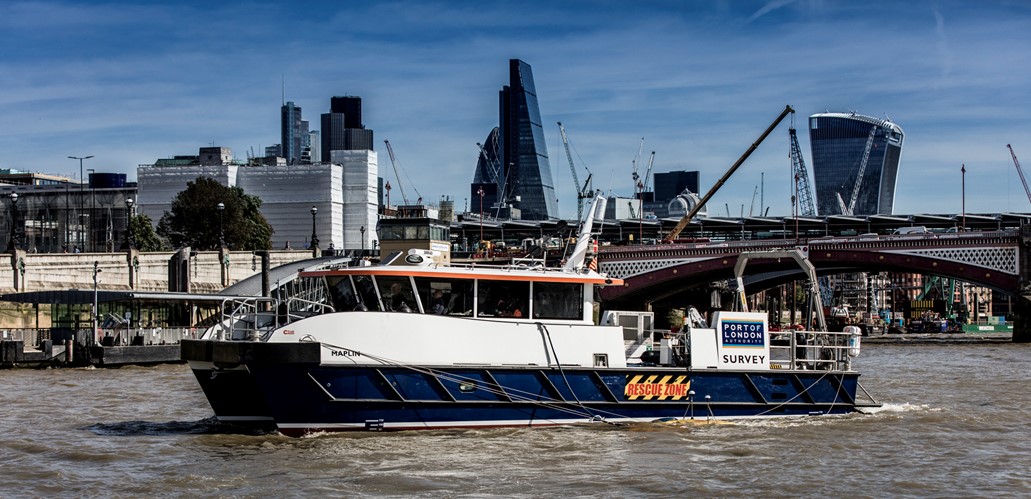
With a fleet of three survey vessels and 18 staff, the Port of London Authority (PLA) Hydrographic Service provides wide-area monitoring, dredge support, and asset inspection surveys across the 400 square miles of the River Thames and Thames estuary. The PLA and their contract partners conduct surveys for the safety of navigation, conservancy and environmental monitoring, and detailed engineering works. Over 400 surveys are conducted each year.

We interviewed Port Hydrographer John Dillon-Leetch and Operations Manager Jim Powell to discuss their experience working with R2Sonic, and how the PLA fleet uses R2Sonic’s technology.
The PLA landed the capital London Gateway dredging project in 2004. As they considered the size and complexity of the undertaking, the PLA began investigating multibeam echosounder systems (MBES). Multibeams offer three distinct advantages over single beams:
- 100% coverage for exact volume calculations
- Superior obstruction detection
- Proven accuracy delivering special order surveys
Over the next ten years, multibeam technology continued to advance, systems became more accurate, and software platforms became more finely tuned. During this period, Mr. Dillon-Leetch and Mr. Powell monitored closely as different products and manufacturers joined the marketplace.

Then, in 2014, the PLA team added a new boat to their fleet. Intent upon outfitting the new vessel with the most advanced MBES technology, the PLA launched a Request For Quote (RFQ) to identify the best MBES manufacturer for their needs.
R2Sonic won with the Sonic 2024 based on two key differentiators:
- Wideband selectable operating frequencies (between 170kHz and 450kHz to 1Hz resolution)
- Ultra High Resolution (UHR) inspection capability (700kHz)
John Dillon-Leetch describes, “These two differentiators – the physics and the frequency – allow you to define ever smaller seabed and structural features. You just don’t get that level of detail with traditionally used frequencies.”

John Dillon-Leetch uses the example of water intake structures. When UHR is selected, the beamwidth is extremely narrow – 0.3° x 0.6°, which can enable a surveyor to detect inch-wide bars in 10-20 meters of water without having to send down a diver. This saves time and money.
“R2Sonic customer service provides confidence and peace of mind – if something goes wrong, R2Sonic has your back.”

The R2Sonic service model is faster, more flexible, and less complicated. It includes free technical support provided by R2Sonic’s Chief Hydrography Engineer – accessible 24/7 via cell phone and email.
Other R2Sonic value-adds mentioned by John Dillon-Leetch are:
- Software-agnostic: seamless integration with all software platforms
- Price-competitive six-year warranty
- Simple user interface and ease of operability
Asked about their competitive edge, Mr. Dillon-Leetch explained, “We want to offer additional features, like the quad mode, anything that’s a game-changer, where we can offer a key differentiator to customers, because they’re always looking for something new.

What’s on the horizon for the PLA and R2Sonic? Contact us to learn more about how the PLA uses R2Sonic, and how your team can leverage R2Sonic’s MBES technology to meet your surveying needs.
R2Sonic Multibeam Echosounders
Bremen Ports
A Survey Company’s Growth built on R2Sonic Innovation
- 1
- 2





